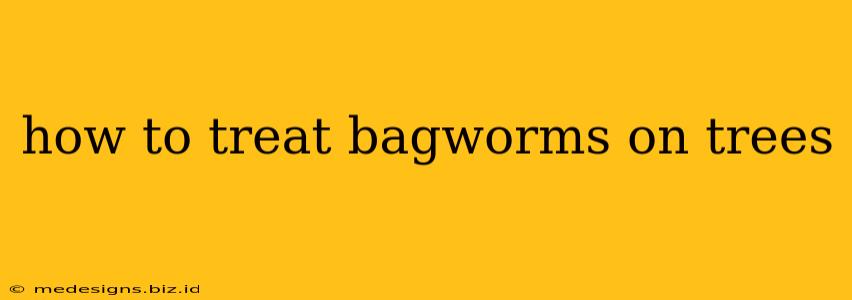Bagworms are a common nuisance for tree owners, causing significant damage if left untreated. These destructive insects create distinctive silken bags, often camouflaged with twigs and leaves, that house their larvae. This comprehensive guide will walk you through identifying bagworms, understanding the damage they cause, and effectively treating infestations to protect your trees.
Identifying Bagworm Infestations
Before you can treat bagworms, you need to accurately identify them. Look for these key signs:
-
The Bags: These are the most obvious indicator. They are typically 1-2 inches long, teardrop or cigar-shaped, and attached to branches. The bags are made of silk and often covered with bits of leaves, twigs, and other debris for camouflage.
-
Damaged Foliage: Bagworm larvae feed on tree foliage, resulting in defoliation. This can weaken the tree and make it more susceptible to disease and other pests. Look for patchy or significant leaf loss.
-
Tree Species: Bagworms are not picky eaters and can infest a wide variety of trees and shrubs, including junipers, arborvitae, pines, and oaks.
Understanding the Damage Caused by Bagworms
Bagworm infestations can cause significant damage to your trees, including:
-
Defoliation: This is the most common and visible sign of infestation. Repeated defoliation weakens the tree, making it less resilient to harsh weather conditions and disease.
-
Tree Death: In severe infestations, particularly on young or already stressed trees, defoliation can lead to death.
-
Aesthetic Damage: The bags themselves can detract from the beauty of your landscape.
Effective Bagworm Treatment Methods
Several methods are available to control bagworm infestations, ranging from manual removal to chemical treatments. The best approach depends on the severity of the infestation and your personal preferences.
1. Manual Removal
For small infestations, manual removal is an effective and environmentally friendly option. This involves carefully removing the bags from the tree by hand and disposing of them in soapy water or a sealed bag. This is best done in the fall or winter when the larvae are dormant inside their bags. Remember to wear gloves to avoid skin irritation.
2. Bacillus thuringiensis (Bt)
Bt is a naturally occurring bacterium that is toxic to bagworm larvae. It's a biological control method, meaning it's less harmful to the environment and beneficial insects. Apply Bt according to the product label instructions, typically focusing on young larvae. Multiple applications may be necessary.
3. Insecticides
Chemical insecticides, such as those containing carbaryl or permethrin, can be effective in controlling bagworm infestations. However, these should be used as a last resort due to their potential impact on beneficial insects and the environment. Always follow the product label instructions carefully. Consider the safety of pets and children when using insecticides.
Preventing Future Bagworm Infestations
Preventing future infestations is crucial. Here's how:
-
Regular Inspection: Regularly inspect your trees for signs of bagworms, especially during the growing season. Early detection allows for quicker and more effective treatment.
-
Pruning: Remove infested branches promptly to eliminate the source of the infestation.
-
Maintain Tree Health: Healthy trees are generally more resistant to pests. Ensure your trees receive adequate water and nutrients.
-
Natural Predators: Encourage natural predators of bagworms, such as birds and parasitic wasps, by providing a suitable habitat in your landscape.
Conclusion
Bagworms can pose a significant threat to your trees, but with proper identification and treatment, you can effectively protect them. Choose the treatment method that best suits your needs and remember that prevention is always the best approach. By combining vigilance, timely intervention, and preventative measures, you can keep your trees healthy and beautiful.
